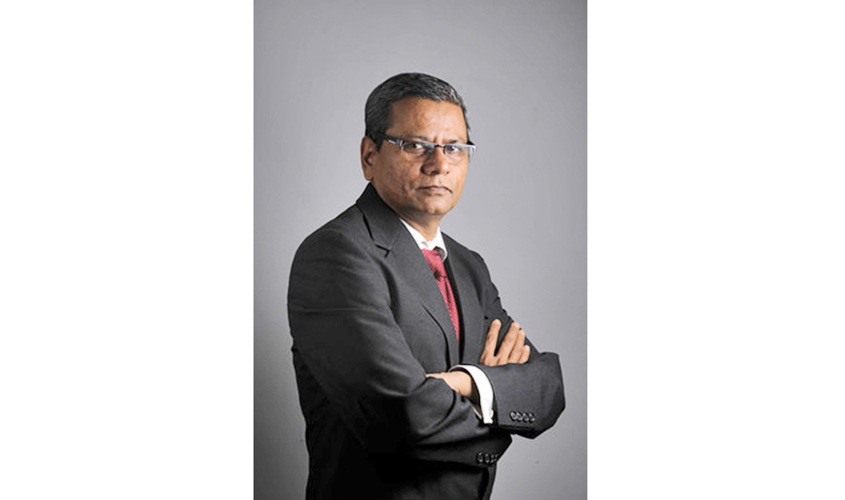In our age of maverick entrepreneurs, there are many who have been successful in translating an idea into a popular product. Many twenty-somethings were able to set up corporations that eventually turned out to be the most valued brand, take Apple for instance. In such an age, the transformation of a micro finance company into a full-fledged commercial bank may not sound spectacular. But when one places the incident in the context — that of the origin of a micro-finance company in a single room at Khirishtala, Howrah, in a highly politicised state of West Bengal, and surviving the political vicissitudes, and eventually bagging a full commercial bank licence in an intensely competitive financial market of India in just about 12 years — the story of Bandhan Bank becomes a compelling one.
Tamal Bandyopadhyay is a good story teller. What is more, he too, as a Bengali originating from the state of Bandhan founder Chandra Sekhar Ghosh, had a sentimental attachment to the setting up of the bank. Perhaps it is more than sentiment since the book includes his photograph with Ghosh after collecting the final banking licence from RBI headquarters in June 2015. Evidently, as one experienced with the labyrinth of power in India’s financial capital Mumbai, Tamal might have supported Ghosh in overcoming various obstacles. Photographs of President Pranab Mukherjee, too, give the impression that Ghosh could effectively use his “bong” connection in winning the banking licence. Even if these views may circulate among those who failed in their effort, the fact remains that Bandhan and Ghosh had created a profile which nobody could rubbish.
The book does not deal with the background story of lobbying and counter lobbying but narrates the simple story of dedication of Ghosh and his team in delivering finance to those who have no source of getting the same. Those aware of the failure of micro-finance companies in Andhra Pradesh, particularly India’s then arguably most successful SKS Microfinance — the company that listed its shares in the Mumbai stock
There had been a lot of hard work before Bandhan could win the licence. The fact is that to be among the top 25 names in the Indian corporate sector, to win a banking licence for a micro-finance company from the relatively obscure Kolkata is not an easy task. Only two — Bandhan and IDFC — could go past the various hurdles created by government red tape. Three big names of Indian corporate sector — Aditya Birla, Reliance ADAG and Bajaj Fin Serv failed in their bids. Two successive RBI Governors and a committee headed by a third former Governor kept in check intrusion of corporations who were not meeting the
strict criteria.
The book is meant for readers who are not looking for the story of complex finance markets of the country, but rather for those who would like to discover a homegrown success story and are open to appreciating it.
The transparent and rigorous RBI had done due diligence which stretched Bandhan and its life Chandra Sekhar Ghosh to the fullest possible extent. With the support from his dedicated staff, Ghosh could steer Bandhan successfully out of all regulatory issues. More than winning the licence, Ghosh deserves credit for maintaining a clean image and balance sheet despite operating in the much maligned micro- finance sector. In the book, the author has accounted for not only the time spent, excess baggage fee paid but also messages exchanged among the Bandhan officials. For those who were part of the event, the book is a souvenir to collect.
The book is meant for readers who are not looking for the story of complex finance markets of the country, but rather for those who would like to discover a homegrown success story and appreciate it. Chandra Sekhar Ghosh is certainly a role model in a development starved state that still has to look back at least three decades in search of icons.
Started from a four-by-six feet cubicle at Khirishtala, Howrah Bandhan was ranked second among the world’s most successful micro-finance entities by Forbes magazine. Now the bank plans to have 2,022 branches in the next ten years. Those who know of micro finance industry and banking business will realise how much of a change of character it is to turn one MFI into a commercial bank. Ghosh has a challenge on hand.
Bandhan began well. Ghosh has come a long way from relative obscurity to a position of prominence as owner of a commercial bank. This is but the beginning. Ghosh will be measured in terms of the success of Bandhan Bank. Point to note that since opening up of bank licences in the 1990s several new entrants had to exit the business and hand over their banks to existing players. For Bandhan and Ghosh, the journey has just begun. After a track record of say 20 years from now, once the bank assumes its appointed place that its well-wishers hope it will, Tamal Bandyopadhyay might have to write a second volume, perhaps with even more passion mixed with pride than the current one.

